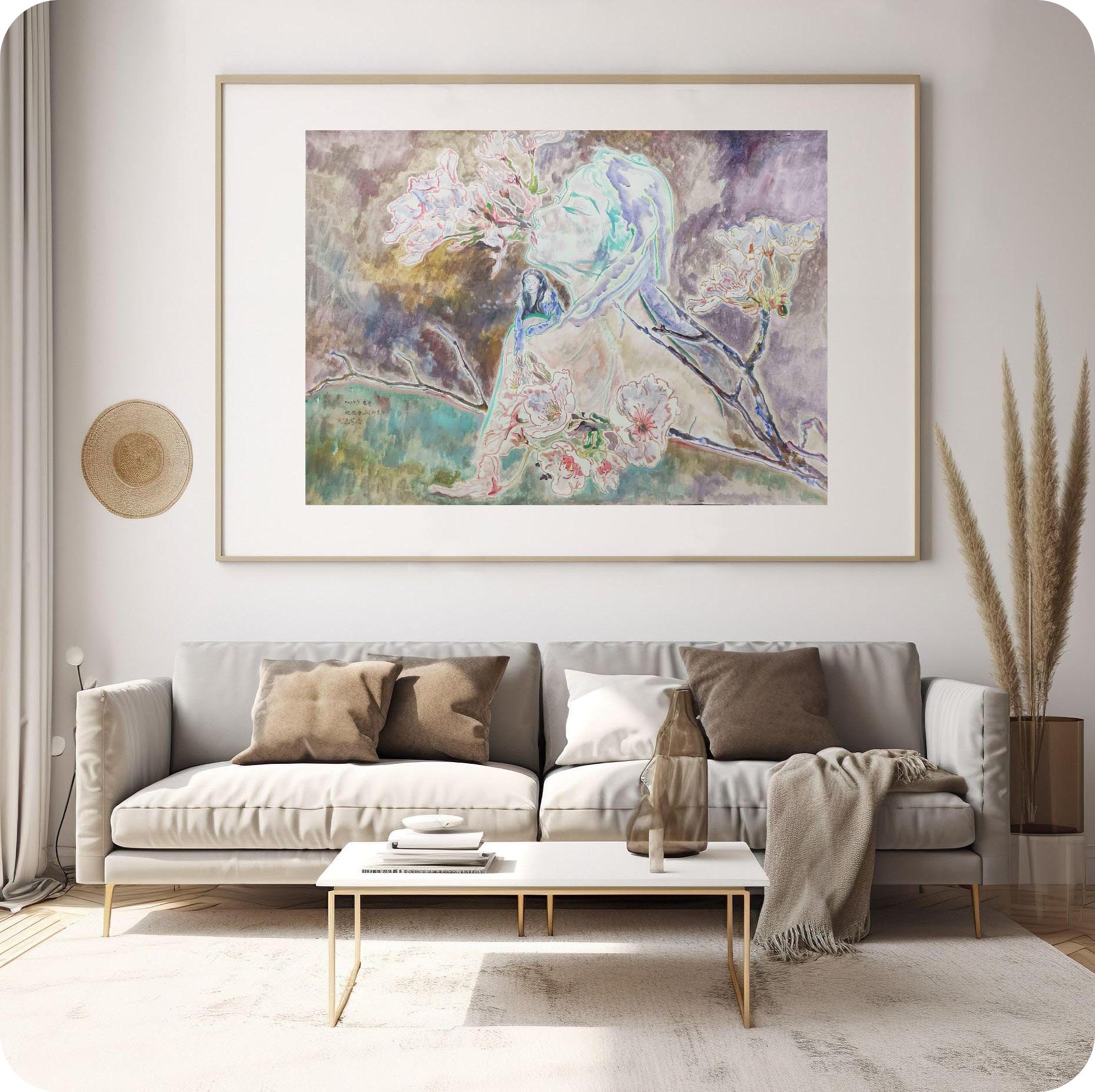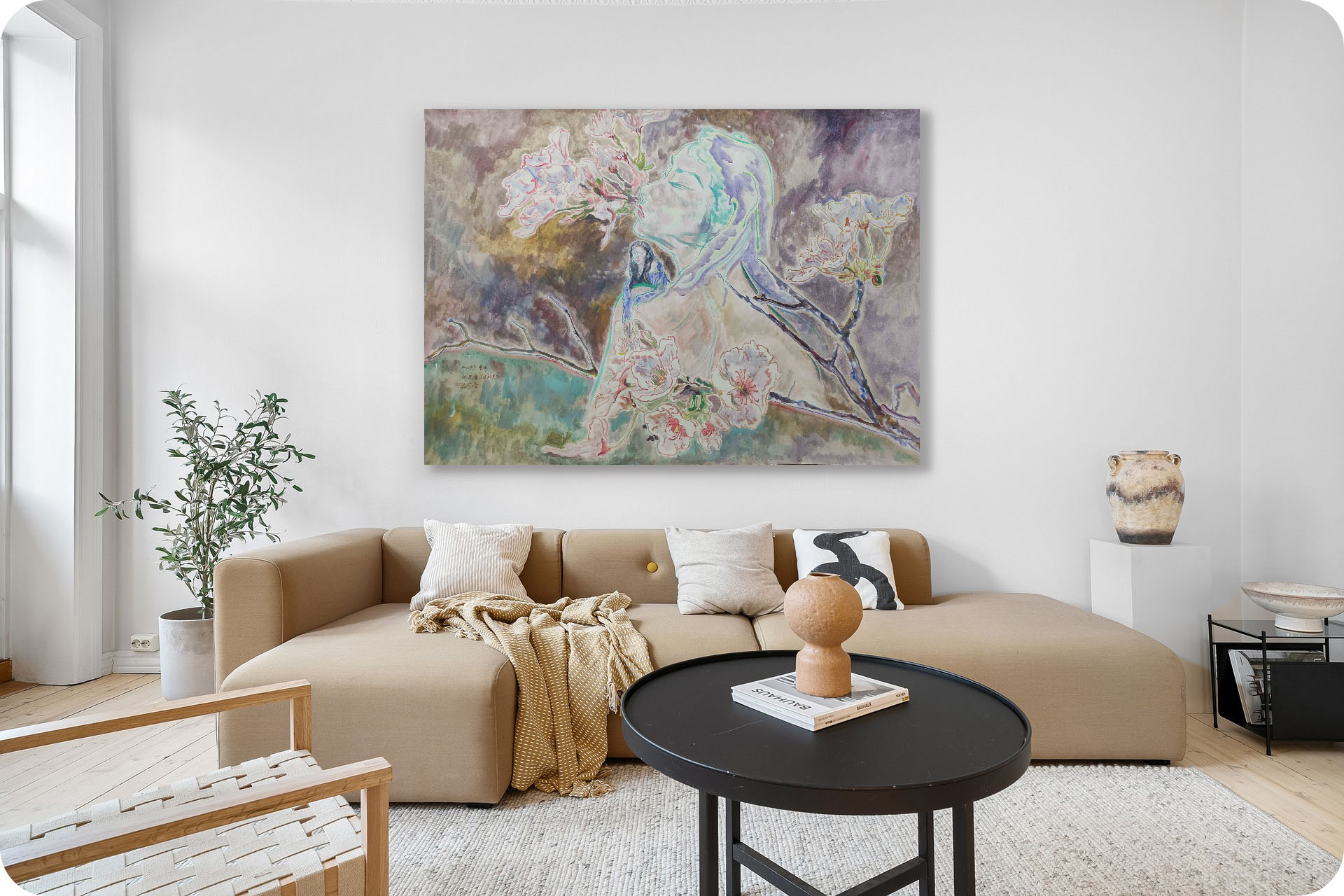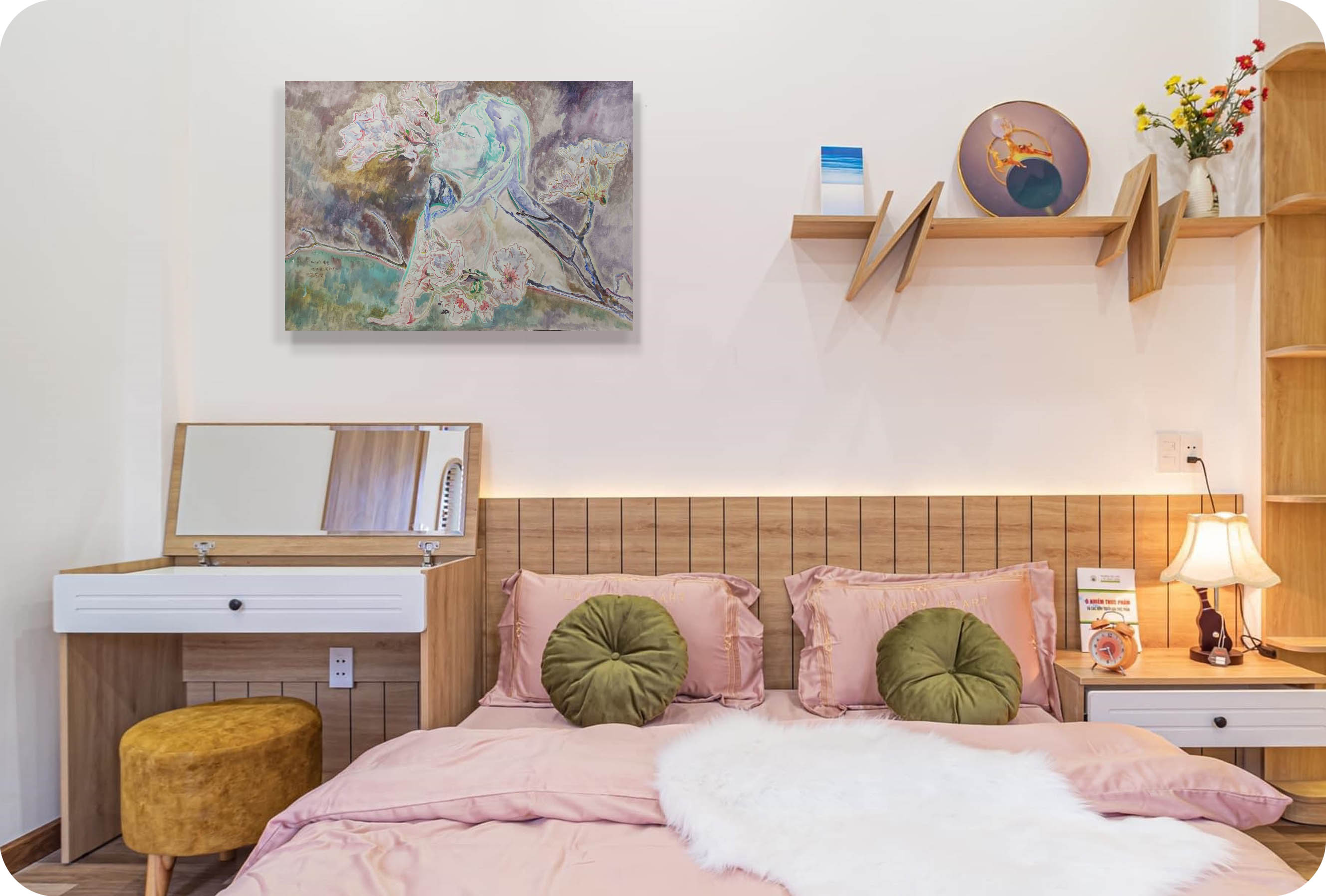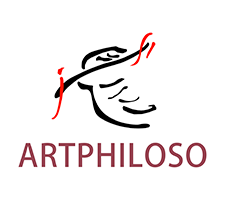This painting was created in 2024. The colors of this year are still bright but not dazzling. I have gradually found a balance point among the bright colors.
Inches: x in
Size without the frame: x cm
Country: China
Date: 2024
Materials: Watercolor Acrylic paint on paper
Condition: well preserved
Creative themes and style | My works revolve around the creative concept of "The land of humanity, People on the land".The people in the painting are people in nature, and the lines, shapes, and colors are close to nature. The nature in the painting is nature in the eyes of humans, existing in interaction with humans.I don’t pursue a series of works with a fixed and continuous style. I hope that the style of the pictures will synchronize with the changes in my life and always remain oscillating. The performance of the work must be in sync with the development of one's own life in order to be Sincere and powerful.Ideas are later.
An Interview with Artist Philo by Artphiloso Gallery
If you would like to collect this artwork or know more about the artist, please contact us.
art for office walls,artwork for office wall,pictures for office,wall art for home office,office wall painting.



1. Medium and Atmosphere
This painting unfolds like a poetic fantasy woven in watercolor, where the fluid rhythm of the medium dissolves the boundaries between memory and reality. The blurred transitions of color generate a hazy atmosphere, simultaneously intimate and elusive, inviting viewers into a space of introspection rather than clarity.
2. Surrealist Structure
Through the visual logic of Surrealism, figures, flowers, and an indistinct background are layered into a dreamlike field. The central figure, with closed eyes and softened contours, blends with blooming branches, suggesting a state where identity and natural fragrance merge.
3. Symbolism of Flowers
The pale pink blossoms, painted with transparent textures, resonate with the figure’s delicate outline. Their fading translucency recalls the fleeting quality of memory — as if the fragrance itself were a story told not through words but through time’s residue.
4. Dual Figures and the Motif of “Questioning”
Within the larger silhouette rests a smaller figure, whose posture and presence embody the act of “questioning.” This nested form suggests that memory is never singular; it continually interrogates itself, retrieving fragments of past sensations from the folds of time. The interplay between the two figures creates a memory maze, where remembrance is not warm nesting but endless self-entanglement.
5. Ambiguity of Memory and Emotion
The mottled background tones act like the base colors of emotion — blurred, shifting, and unresolved. Rather than offering narrative certainty, they function as an emotional smoke screen, destabilizing the clarity of memory. The idea of the “27 flower scents” becomes a paradox: one may attempt to count and preserve them, yet the vortex of color pulls perception into doubt, questioning the authenticity of memory itself.
6. Poetic but Unsettling Intent
By deliberately blurring outlines and merging forms, the artist challenges the desire to precisely replicate beauty. What seems like a gentle evocation of fragrance turns into a sharp interrogation of self-deception: are we recalling the scents themselves, or inventing them as a defense against forgetting? In this sense, the work transforms “questioning” from nostalgic tenderness into a needle piercing the illusions of memory.
7. Conceptual Depth
Ultimately, the painting stages a poetic yet unsettling “game” in which memory, fragrance, and selfhood collapse into one another. It resists conventional empathy, instead compelling viewers to confront the fragile line between illusion and remembrance. In the mist of watercolor, art reveals itself as both a rebellion against sentimentality and a reconstruction of the emotional weight of ordinary life.
Marc Chagall, Birthday — Dreamlike colors and the intertwining of figures and flowers evoke a surrealist romance.
Sanyu, White Porcelain Vase and Chrysanthemums — Minimal brushstrokes and light tonalities convey restrained, meditative poetry.
Tsuguharu Foujita, Cat and Girl — Soft textures and delicate blending create an atmosphere of quiet intimacy.
Paul Klee, The Path to Paradise — Abstract symbols and flexible colors build a fantastical and spiritual mood.
The light, airy quality in the painting comes from using a water-rich acrylic technique. Watercolor could have achieved even stronger transparency, but I feel more at ease with the semi-translucent layering effects of acrylics.
From the first idea to the finished work, the painting was completed in just two days, driven by a heightened sense of intuition held in tight focus. By the end, I had poured out all my energy—continuing any further would only have dulled the process.
So I paused. Next, with the season changing, it was time to wait for the right weather to wash and sun-dry the bedding.
In the painting, what you see is the first blossoming tree of early spring, with the eye taking the form of a swallow resting beneath the eaves.
The artist employs cool tones of aqua-green and violet to trace the figure, creating the impression of being wrapped in light. This treatment allows the subject to both merge with the background and stand apart from it, generating an atmosphere suspended between dream and reality.
Unlike traditional oil impasto, the petals here are delicately outlined with fine lines and softly washed with pale color. This preserves a watercolor-like transparency while introducing a printmaking-style clarity, giving the flowers a balance between softness and firmness.
The background, composed of layered gray-browns and violet-browns, resembles a hazy fog. This blurred, heavy atmosphere provides a counterpoint to the brighter flowers and defined figure, thereby heightening the contrast and narrative tension of the scene.
The work combines the lyricism of feminine portraiture with the symbolist aura of floral imagery, making it ideal for spaces seeking a quiet, contemplative mood. Whether in a private study or a themed lounge, it can evoke a dreamlike stillness that resonates spiritually with viewers.
This painting belongs to contemporary symbolist watercolor art, distinguished by its fusion of figure, flower, and memory-like atmosphere into poetic visual symbols. Its value lies not only in academic discourse but also in the long-term aesthetic and market appeal of contemporary art centered on female themes.
A: Click here to view ARTPHILOSO's Guide for Collectors.
